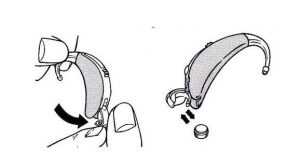There are still many people who are still doing pure tone audiometry.
After seeing such a report
The heart is full of doubts
???
a pure tone audiometry report

How do you understand this?
Don’t worry, we will give you “the power of God”
Let you understand your audiograms in minutes
01
How to judge the extent of your hearing loss?
You need to judge your hearing loss based on your average hearing value. What is the average hearing threshold?


As shown in the above figure, the green shaded range indicates the normal range of hearing, that is, the average hearing ≤25dBThat is normal hearing. Average hearing threshold25dBThe above is hearing impairment.
Abscissa: Represents the frequency of the sound. The signal sounds you hear when you listen to the sound are different because of these frequencies.
The ordinate: represents the loudness of the sound, that is, the decibel value
Then your average hearing threshold is500,1000,2000,4000HzThe sum of the corresponding values divided by4. which is:
Average hearing threshold=(500HzCorresponding value+1000HzCorresponding value+2000HzCorresponding value+4000HzCorresponding value)/4
for example

Take this figure as an example, the average hearing threshold=(50 55 + + + 50 55)/4=52.5dB
After calculating the average hearing threshold, the degree of hearing loss will be judged. It can be judged according to the above table, then your hearing loss is moderate.
02
How to judge the nature of hearing loss?

In the audiogram as shown in the figure, the general right ear hearing picture is on the left side, marked in red, and the left ear hearing picture is on the right side, marked in blue.
Two lines are drawn in each figure, representing the air conduction (measured by wearing a gas guide earpiece) and the bone conduction (measured by a bone conduction earpiece).
Air conduction curve: the red curve of the right ear is formed by a circle ○ or △, and the left ear is made of a forkXOr a blue curve that is connected.
Bone conduction curve: the right ear is made up of<Or[The symbol is connected into a red curve, the left ear is made up of>Or]A blue curve connected by symbols.
The bone conduction curve is generally above the air conduction curve.
Judging the nature of deafness
Conductive deafness
Bone conduction curve at ≤25dBWithin the range, the air conduction curve distribution is greater than25dBNot in the normal range.
The location of the lesion is mainly in the outer and middle ear.
Sensorineural deafness
Both the bone conduction curve and the air conduction curve are larger than25dBNot in the normal range, and the distance between the two curves is less than10dB.
The location of the lesion is mainly in the inner ear (cochlear or posterior cranial nerve center).
Mixed deafness
Both the bone conduction curve and the air conduction curve are larger than25dBNot in the normal range, and the distance between the two curves is greater than10dB.
The location of the lesion is more common in the outer ear, middle ear disease and inner ear disease causing hearing loss.


03
What is the shadow banana map on the audiogram?

This shaded part like a banana shape is called a speech banana map, which is a normal human auditory speech area. If our hearing curve is distributed in the speech banana chart, it proves that we can hear most of the speech.
Have you learnt that?
[banner group='banner-group']


